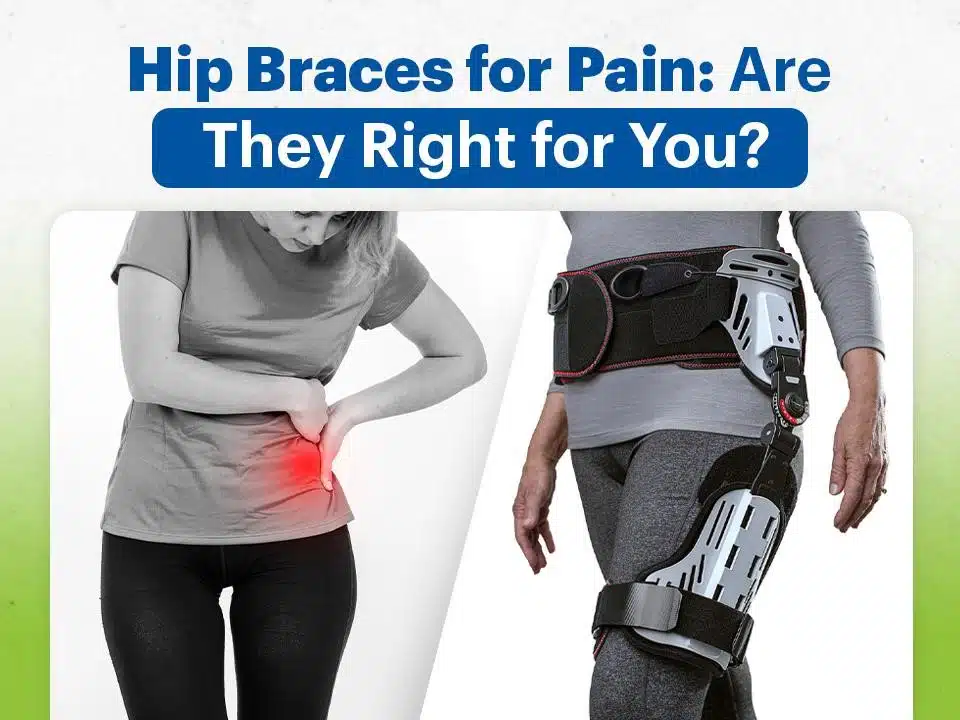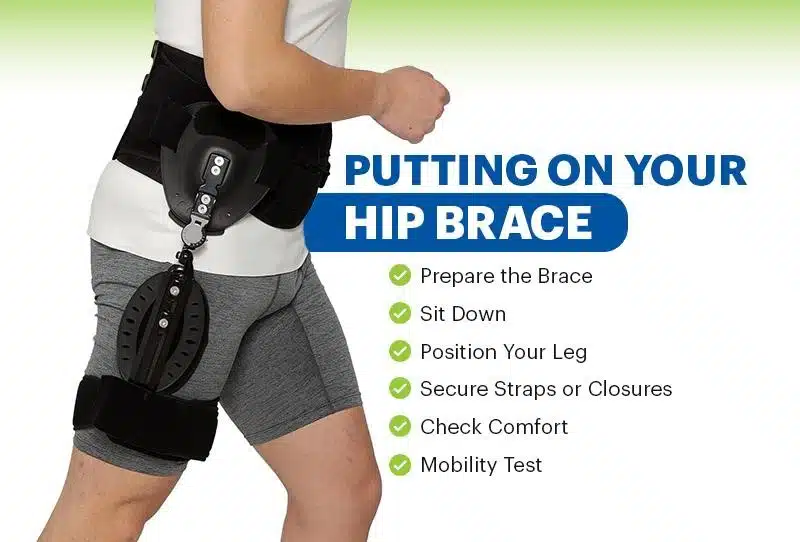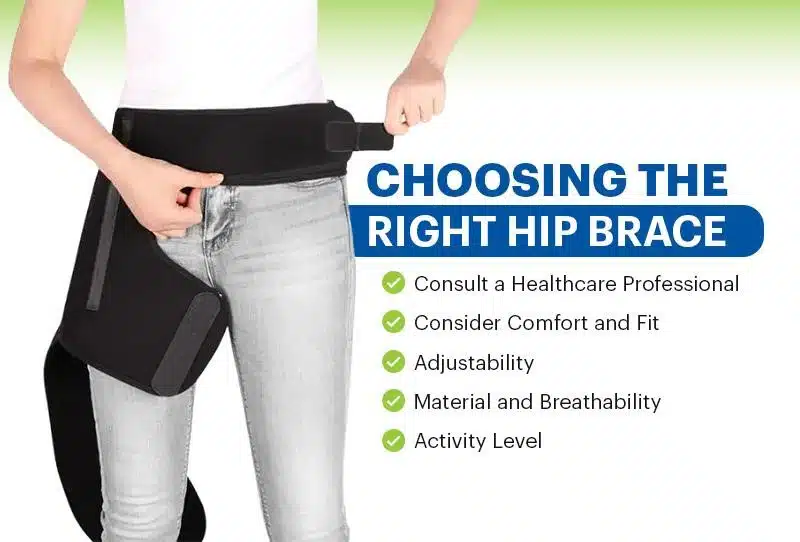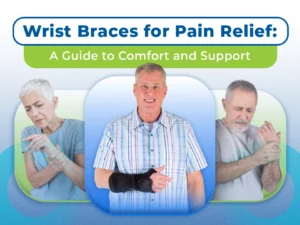Hip pain can be debilitating, affecting your daily activities and overall quality of life. Whether your pain is due to injury, arthritis, or a chronic condition, finding relief is essential. Hip braces are a valuable tool for managing hip pain and improving mobility. In this guide, we’ll explore the benefits of hip braces, help you determine if they’re right, and provide guidance on choosing the best one for your needs.
Understanding Hip Pain
Before discussing solutions, let’s understand the challenges of hip pain. Hip pain can stem from various sources, including injuries, arthritis, muscle imbalances, or structural issues. It often leads to limited mobility, affects posture, and causes discomfort during everyday activities. Understanding the source and nature of your hip pain is the first step toward finding effective solutions.
The Role of Hip Braces
Hip braces are versatile medical devices that can significantly improve your daily life, especially if you are dealing with hip-related issues or have recently undergone hip surgery. These braces offer a range of benefits that can enhance your overall well-being and mobility:
1. Pain Relief
Hip braces are highly effective in alleviating pain and discomfort associated with various hip conditions. They provide targeted compression and support, reducing strain and pressure on the hip joint and surrounding muscles. This pain relief can make everyday activities more manageable and less painful.
2. Enhanced Mobility
Improved mobility is a significant advantage of using hip braces. By stabilizing the hip joint and minimizing pain, these braces make it easier to perform daily activities with fewer limitations. You can regain the freedom to move comfortably without hesitation, allowing you to enjoy a more active lifestyle.
3. Post-Surgery Support
For individuals recovering from hip surgery, hip braces are crucial in ensuring a successful and complication-free recovery process. They offer stability and protection to the surgical area, aiding in healing. Hip braces allow you to regain strength and mobility at a controlled pace, reducing the risk of complications during your recovery journey.
4. Injury Prevention
Hip braces are not just for managing existing pain; they can also serve as preventive tools. Wearing a hip brace can provide extra protection if you participate in physical activities or sports that strain your hip joint. It reduces the risk of further injuries, strains, or sprains, allowing you to engage confidently in your favourite activities.
By understanding the multiple benefits of hip braces, you can make an informed decision about incorporating them into your daily life. Whether you seek pain relief, improved mobility, support during post-surgery recovery, or injury prevention, hip braces can be valuable allies in your journey toward better hip health and an enhanced quality of life.
Customizing Hip Brace Support
Not all hip conditions are the same, nor should hip braces be one-size-fits-all. Customization is vital in ensuring you receive the support and comfort you need. Here’s how adjustable hip braces cater to individual comfort:
- Tailored Compression: Adjustable hip braces allow you to fine-tune the compression level according to your comfort and needs. This customization ensures you receive support without unnecessary pressure on your hip area. Adjust the brace accordingly if you require gentle support or firmer compression.
- Precision Fit: Every hip is unique; adjustable hip braces recognize that. These braces can be customized to fit your specific hip shape, providing targeted support where you need it the most. This precision fit ensures optimal stabilization and pain relief for your hip joint.
- Adaptable Straps: Hip braces with adjustable straps or closures offer flexibility in achieving the perfect fit. These straps can be easily adjusted to accommodate swelling, activity level, or personal comfort preferences. Whether you need a snug fit during physical activities or a more relaxed fit for everyday wear, adaptable straps ensure the brace remains comfortable and effective.
By choosing an adjustable hip brace, you take control of your comfort and support, allowing you to address your unique hip-related challenges effectively. These braces offer a personalized solution that adapts to your changing needs, ensuring you can confidently go about your daily activities with the right support and comfort.
Putting on Your Hip Brace
Using a hip brace correctly is crucial for achieving the desired comfort and effectiveness. Here’s a step-by-step guide for seniors:
- Prepare the Brace: Before wearing your hip brace, ensure it’s clean and in good condition. Inspect it for wear and tear signs and ensure all components function correctly.
- Sit Down: Locate a comfortable chair or sit on the edge of your bed. Having a stable and comfortable surface to sit on makes the process easier.
- Position Your Leg: Extend the leg that requires the hip brace slightly. Position the hip brace over your hip joint, ensuring it covers the affected area entirely.
- Secure Straps or Closures: Depending on your hip brace type, you’ll find straps or closures designed to keep the brace in place. Start securing them from the bottom and work your way up. Ensure a snug fit, but be cautious not to overtighten, as this could cause discomfort or restrict your movement.
- Check Comfort: Take a moment to check whether the hip brace feels comfortable. Ensure there are no areas causing irritation or pressure points against your skin. Adjust the fit if needed to maximize comfort.
- Mobility Test: Once the hip brace is securely placed, stand up and perform a mobility test. Move around to ensure the brace provides the necessary support without overly restricting your movements. You should be able to walk comfortably and perform your daily activities without hindrance.
By following these steps, you can ensure that your hip brace provides the comfort and support you need to manage hip pain effectively and maintain an active lifestyle.
Tips for Using Your Hip Brace Effectively
Once you’ve chosen the right hip brace, it’s crucial to use it correctly to maximize its benefits. Here’s a step-by-step guide for seniors on how to use a hip brace effectively:
- Prepare the Brace: Ensure your hip brace is clean and in good condition before wearing it.
- Find a Comfortable Position: Sit in a comfortable chair or on the edge of your bed.
- Position Your Leg: Extend your leg slightly and position the hip brace over your hip joint.
- Secure Straps or Closures: Depending on the type of hip brace, fasten the straps or closures, starting from the bottom and working your way up. Ensure a snug fit without overtightening.
- Check for Comfort: Make sure the brace feels comfortable and doesn’t cause any irritation or pressure points.
- Test Mobility: Stand up and test your mobility with the hip brace. Ensure it provides the necessary support without restricting your movements excessively.
By following these steps, you can ensure that your hip brace provides the comfort and support you need to manage hip pain effectively and maintain an active lifestyle.
Read More: The Benefits of Using a Hip Support Brace for Pain Relief
Choosing the Right Hip Brace
Selecting the appropriate hip brace is essential for maximizing comfort and effectiveness. Here are some practical tips:
1. Consult a Healthcare Professional
Before selecting a hip brace, consult with a healthcare provider or orthopedic specialist to determine the underlying cause of your hip pain and get personalized recommendations.
2. Consider Comfort and Fit
Ensure your hip brace is comfortable and fits correctly. A well-fitted brace will provide optimal support without causing discomfort.
3. Adjustability
If possible, choose a hip brace with adjustable straps or closures to customize the level of support as needed.
4. Material and Breathability
Consider the material of the brace and its breathability. Opt for a breathable fabric that prevents excessive sweating and skin irritation.
5. Activity Level
Consider your activity level and lifestyle when selecting a hip brace. Some braces are designed for daily wear, while others are more suitable for specific activities or recovery periods.
Considering these considerations, you can make an informed choice and find the hip brace that best suits your needs, offering the comfort and support required to manage hip pain effectively.
Caring for Your Hip Brace
Proper maintenance and care of your hip brace are essential for its longevity and effectiveness. Here are some tips to keep in mind:
- Regular Cleaning: Clean your hip brace regularly to prevent dirt and bacteria buildup.
- Inspect for Wear and Tear: Regularly inspect the brace for any signs of wear and tear and ensure all components function correctly.
- Skin Protection: Use a moisture-wicking undershirt to protect your skin from irritation caused by prolonged brace wear.
- Follow Manufacturer Instructions: Always adhere to the care instructions provided by the supplier or manufacturer to ensure the longevity and hygiene of your hip brace.
By incorporating these additional tips into your hip brace routine, you can maintain its quality and enjoy its pain relief and support benefits.
The Role of Hip Braces in Post-Surgery Recovery
A hip brace can significantly aid your recovery if you’ve recently undergone hip surgery or are planning to do so. Here’s how hip braces support seniors through the healing process:
- Stability and Protection: The surgical area is exceptionally vulnerable following hip surgery. Even minor movements can lead to complications. A hip brace acts as a guardian, providing the stability and protection your healing hip joint needs. Immobilizing the joint somewhat reduces the risk of complications and ensures a smoother recovery.
- Controlled Movement: During the critical post-surgery period, controlling your motion range is paramount. Excessive movement or straining of the surgical site can hinder the healing process and lead to setbacks. Hip braces play a vital role by restricting movement to safe parameters. This controlled movement is essential for proper healing without unnecessary stress on the healing tissues.
- Gradual Mobility Regain: One of the primary goals of post-surgery recovery is to regain mobility. However, it’s crucial to do so gradually and safely. Hip braces facilitate this by providing the necessary support and preventing excessive movement. They act as a guide, allowing you to regain mobility at a controlled pace. This reduces the risk of setbacks or reinjury and promotes a more comfortable and confident recovery journey.
Conclusion
In conclusion, hip braces can be invaluable for individuals seeking relief from hip pain and improved mobility. By choosing the right hip brace, using it correctly, and providing proper care, you can enjoy a better quality of life and regain the freedom to move comfortably. If you’re experiencing hip pain, consult a healthcare professional to determine if a hip brace is the right solution.









